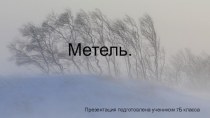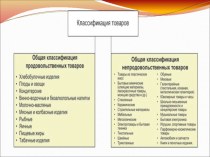- Главная
- Разное
- Бизнес и предпринимательство
- Образование
- Развлечения
- Государство
- Спорт
- Графика
- Культурология
- Еда и кулинария
- Лингвистика
- Религиоведение
- Черчение
- Физкультура
- ИЗО
- Психология
- Социология
- Английский язык
- Астрономия
- Алгебра
- Биология
- География
- Геометрия
- Детские презентации
- Информатика
- История
- Литература
- Маркетинг
- Математика
- Медицина
- Менеджмент
- Музыка
- МХК
- Немецкий язык
- ОБЖ
- Обществознание
- Окружающий мир
- Педагогика
- Русский язык
- Технология
- Физика
- Философия
- Химия
- Шаблоны, картинки для презентаций
- Экология
- Экономика
- Юриспруденция
Что такое findslide.org?
FindSlide.org - это сайт презентаций, докладов, шаблонов в формате PowerPoint.
Обратная связь
Email: Нажмите что бы посмотреть
Презентация на тему The south west
Содержание
- 2. The South WestThe Southwestern United States (also
- 3. The South WestMajor Cities by Population - Phoenix,
- 4. The South WestMajor Landforms:Grand Canyon
- 5. The South WestTexas;Oklahoma;New Mexico;Arizona.
- 6. Texas• The State Capital is Austin • The
- 7. Texas Geographical Location Texas is positioned
- 8. TexasThe Top Five Cities • Houston (2,099,451)
- 9. Major Industries and Services •Aerospace•Medical•High-Tech•Tourism•Agriculture •Oil and Gas
- 10. AerospaceThe International Space Station could be called
- 11. MedicalThe medical profession first became a huge
- 12. High-TechTwo very advanced High-Tech companies call Texas
- 13. TourismTexas is also home to not one,
- 14. AgricultureAgriculture has always been an important source
- 15. Oil and GasThe oil business exploded in
- 16. OklahomaIt is bounded on the east by
- 17. TopographyOklahoma is between the Great Plains and
- 18. The symbols of OklahomaThe flag of the
- 19. NatureThe highest point of Oklahoma is mount
- 20. ClimateOklahoma is located in a humid subtropical
- 21. Скачать презентацию
- 22. Похожие презентации
The South WestThe Southwestern United States (also known as the American Southwest) is a region of the United States which includes Arizona, New Mexico, Texas and Oklahoma bordered on the east by the Llano Estacado, southern
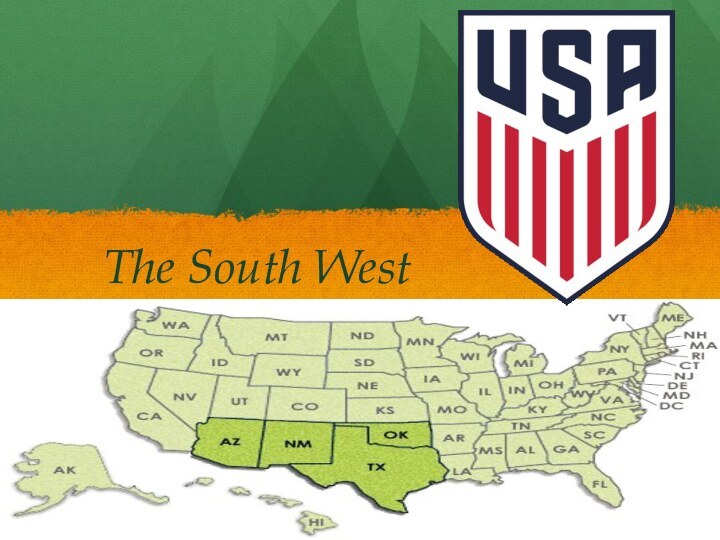
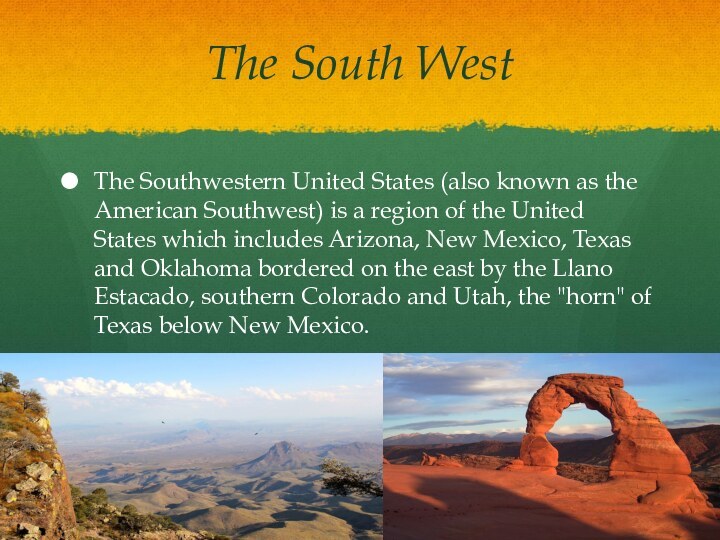
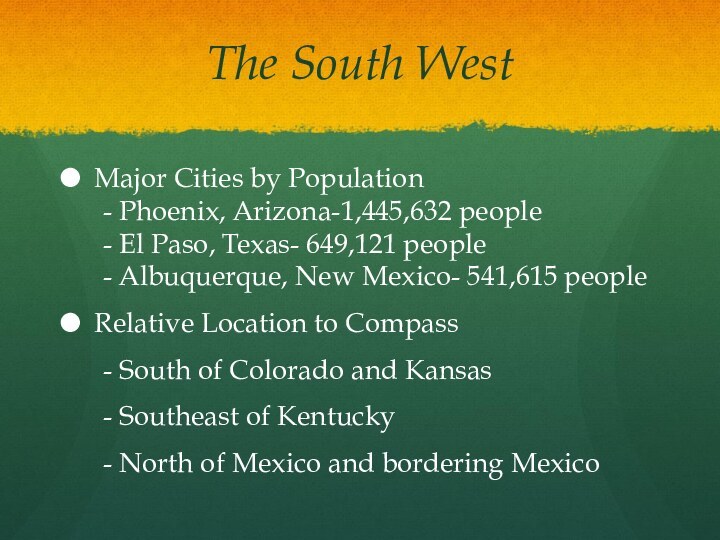
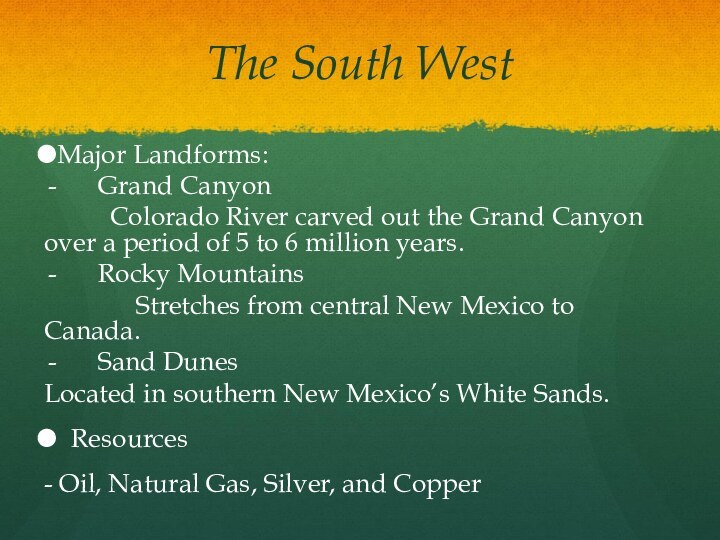
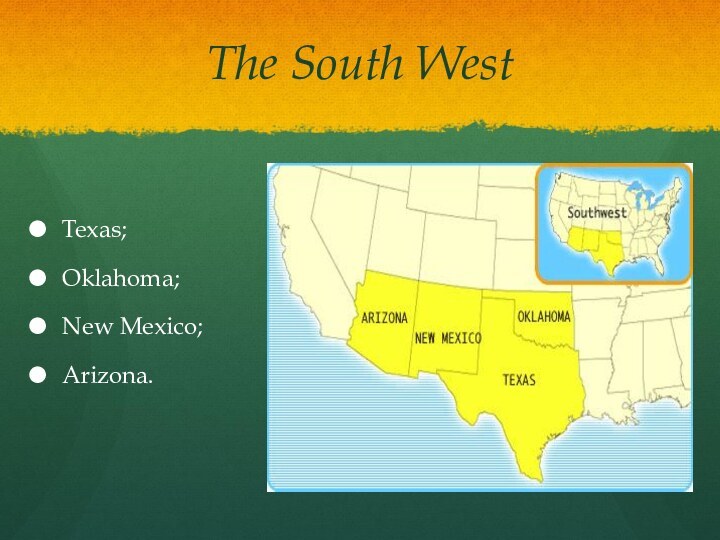
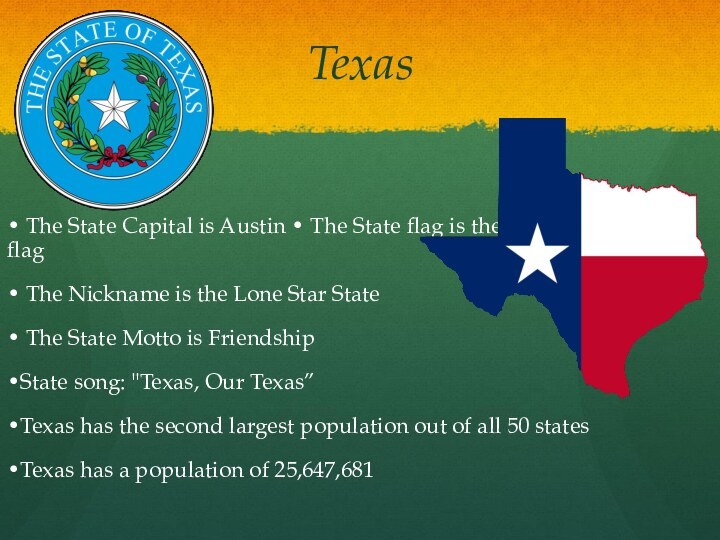
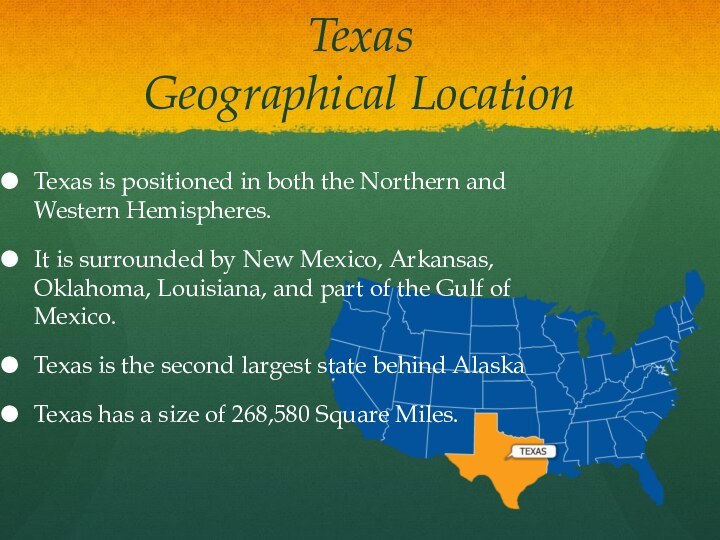
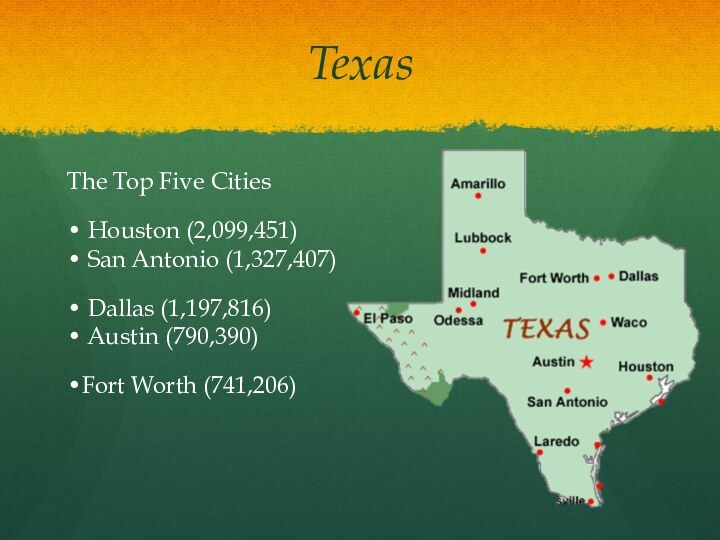


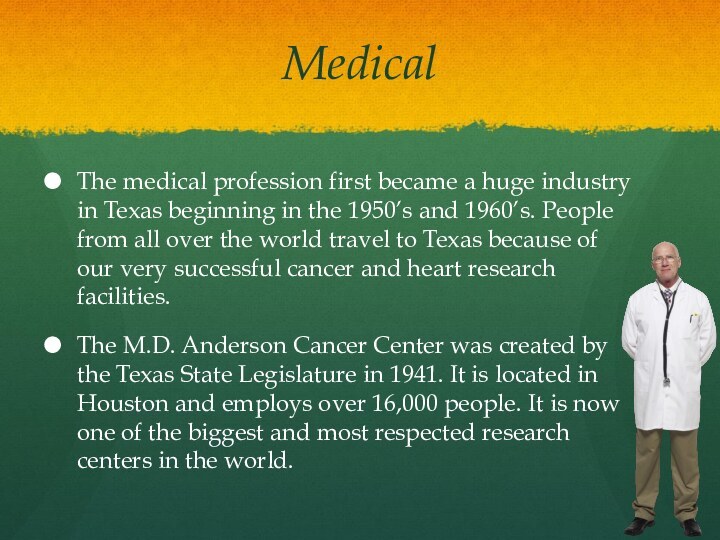

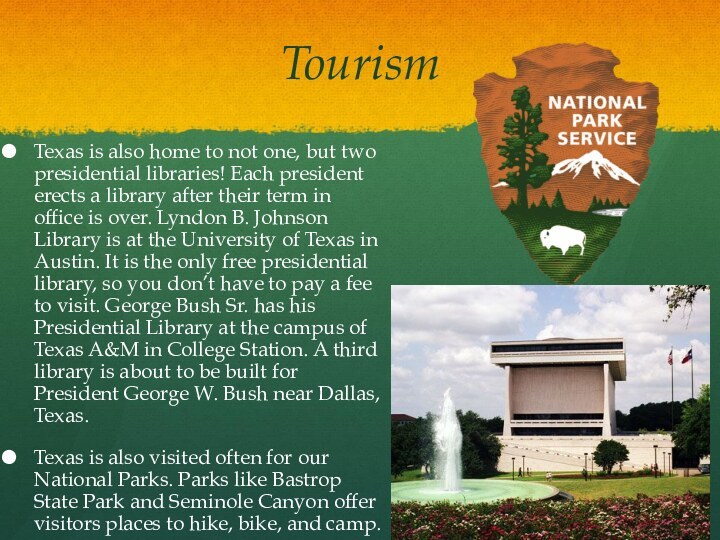
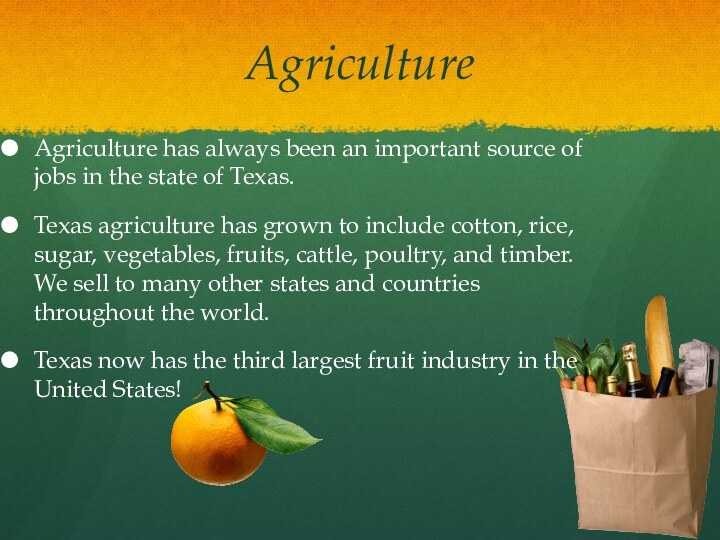


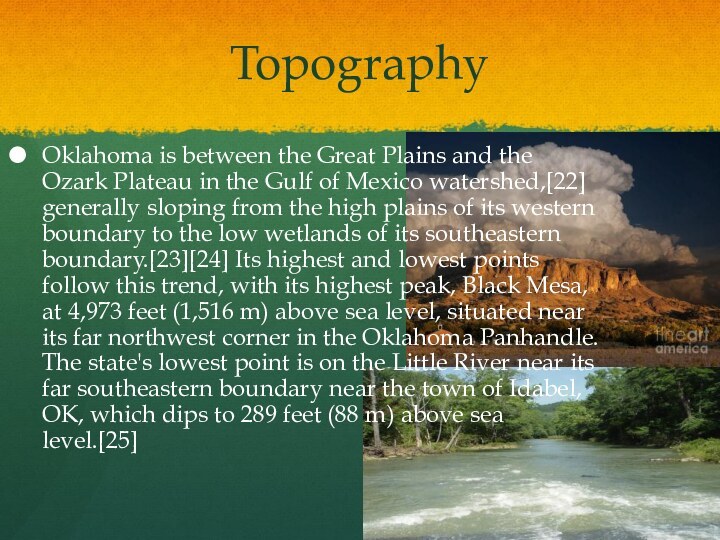
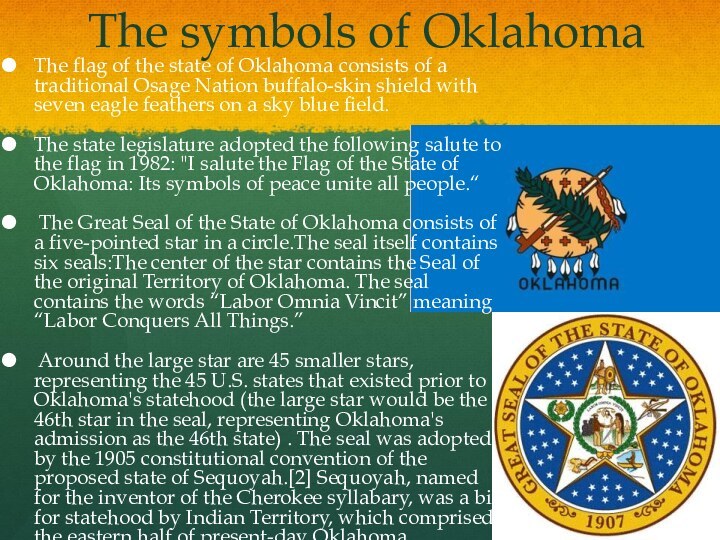
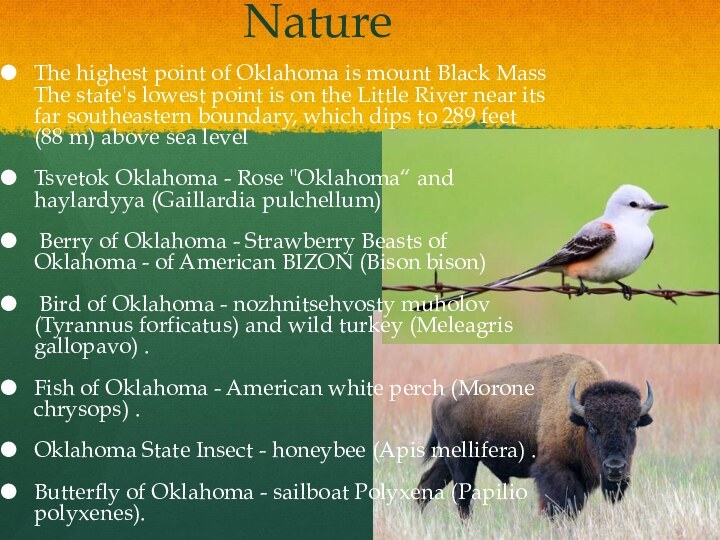
![The south west ClimateOklahoma is located in a humid subtropical region.[40] Oklahoma lies in a](/img/tmb/13/1237028/a00f162692baf4de252bb826ab02fef3-720x.jpg)
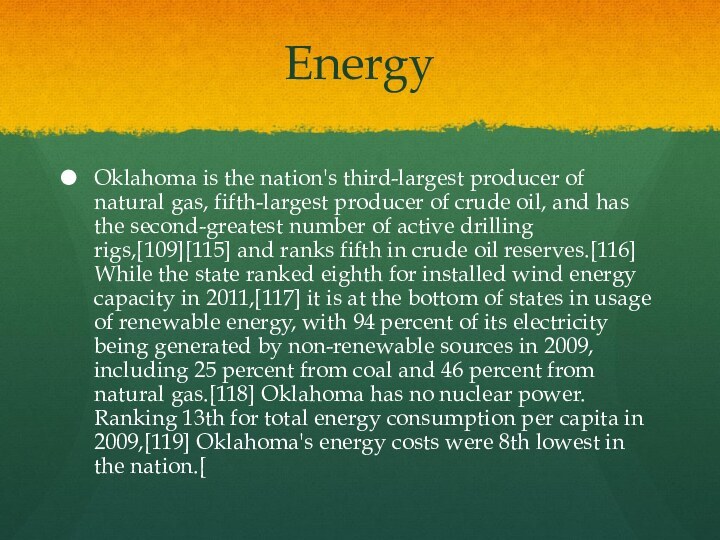
Слайд 3
The South West
Major Cities by Population
- Phoenix, Arizona-1,445,632
people
- El Paso, Texas- 649,121 people
- Albuquerque, New Mexico-
541,615 peopleRelative Location to Compass
- South of Colorado and Kansas
- Southeast of Kentucky
- North of Mexico and bordering Mexico
Слайд 4
The South West
Major Landforms:
Grand Canyon
Colorado River carved out the Grand Canyon over
a period of 5 to 6 million years.Rocky Mountains
Stretches from central New Mexico to Canada.
Sand Dunes
Located in southern New Mexico’s White Sands.
Resources
- Oil, Natural Gas, Silver, and Copper
Слайд 6
Texas
• The State Capital is Austin
• The State
flag is the Lone Star flag
• The Nickname
is the Lone Star State • The State Motto is Friendship
•State song: "Texas, Our Texas”
•Texas has the second largest population out of all 50 states
•Texas has a population of 25,647,681
Слайд 7
Texas
Geographical Location
Texas is positioned in both the
Northern and Western Hemispheres.
It is surrounded by New
Mexico, Arkansas, Oklahoma, Louisiana, and part of the Gulf of Mexico. Texas is the second largest state behind Alaska
Texas has a size of 268,580 Square Miles.
Слайд 8
Texas
The Top Five Cities
• Houston (2,099,451)
• San
Antonio (1,327,407)
• Dallas (1,197,816)
• Austin (790,390)
•Fort Worth (741,206)
Слайд 10
Aerospace
The International Space Station could be called the
biggest scientific project in history. Led by the United
States, the International Space Station unites scientists from 17 different countries. They work to research aspects of space exploration, and they also observe the Earth from their far off view. They can see changes in the environment caused by pollution and natural causes from space!
Слайд 11
Medical
The medical profession first became a huge industry
in Texas beginning in the 1950’s and 1960’s. People
from all over the world travel to Texas because of our very successful cancer and heart research facilities.The M.D. Anderson Cancer Center was created by the Texas State Legislature in 1941. It is located in Houston and employs over 16,000 people. It is now one of the biggest and most respected research centers in the world.
Слайд 12
High-Tech
Two very advanced High-Tech companies call Texas home.
Texas Instruments is based in Dallas, Texas. Originally started
as an exploration service for oil companies, TI started making electronics for the army in World War II. Jack Kilby helped Texas Instruments grow into the computer and semiconductor giant it is today.At the age of 18, Michael Dell used $1000 to start his own business of making people personal computers. He founded Dell Computers in Austin, Texas in 1984, and it has since produces the largest number of personal computers in the world. They have made over $32 billion and Dell employs 38,000 in Texas
Слайд 13
Tourism
Texas is also home to not one, but
two presidential libraries! Each president erects a library after
their term in office is over. Lyndon B. Johnson Library is at the University of Texas in Austin. It is the only free presidential library, so you don’t have to pay a fee to visit. George Bush Sr. has his Presidential Library at the campus of Texas A&M in College Station. A third library is about to be built for President George W. Bush near Dallas, Texas.Texas is also visited often for our National Parks. Parks like Bastrop State Park and Seminole Canyon offer visitors places to hike, bike, and camp.
Слайд 14
Agriculture
Agriculture has always been an important source of
jobs in the state of Texas.
Texas agriculture has grown
to include cotton, rice, sugar, vegetables, fruits, cattle, poultry, and timber. We sell to many other states and countries throughout the world.Texas now has the third largest fruit industry in the United States!
Слайд 15
Oil and Gas
The oil business exploded in Texas
after the discovery of oil at Spindletop on January
10, 1901.Often called Texas Gold, petroleum has brought economic prosperity to Texas off and on for the last 100 years. It has changed the shape of countless towns throughout the state.
Workers in this field extract oil and gas used for heating homes, fueling cars and manufacturing products, such as plastics, medicines, fertilizers and man-made fibers. This field also encompasses oil and gas mining operations and designing the structure of mines and wells. Career options include petroleum engineer, petroleum technician, geophysicist, geologist, well-log analyst and reservoir engineer.
Слайд 16
Oklahoma
It is bounded on the east by Arkansas
and Missouri, on the north by Kansas, on the
northwest by Colorado, on the far west by New Mexico, and on the south and near-west by Texas.Before the first Europeans to modern living throughout the state a variety of Indian tribes, among them: Wichita, Coypeau, Caddo, Cherokee, Choctaw, Seminole, and Osage. In the 16th century in the state were first Europeans, who were Spaniards. Then mastered French terbritory. For many years the area was disputed between Spain and France. In the 19th century, Oklahoma has become a place to relocate the Indians. November 16, 1907 Oklahoma officially became a state the United States. The name of the State of Oklahoma, like many other U.S. states, comes from the indigenous languages of North America - the Indians.
Слайд 17
Topography
Oklahoma is between the Great Plains and the
Ozark Plateau in the Gulf of Mexico watershed,[22] generally
sloping from the high plains of its western boundary to the low wetlands of its southeastern boundary.[23][24] Its highest and lowest points follow this trend, with its highest peak, Black Mesa, at 4,973 feet (1,516 m) above sea level, situated near its far northwest corner in the Oklahoma Panhandle. The state's lowest point is on the Little River near its far southeastern boundary near the town of Idabel, OK, which dips to 289 feet (88 m) above sea level.[25]
Слайд 18
The symbols of Oklahoma
The flag of the state
of Oklahoma consists of a traditional Osage Nation buffalo-skin
shield with seven eagle feathers on a sky blue field.The state legislature adopted the following salute to the flag in 1982: "I salute the Flag of the State of Oklahoma: Its symbols of peace unite all people.“
The Great Seal of the State of Oklahoma consists of a five-pointed star in a circle.The seal itself contains six seals:The center of the star contains the Seal of the original Territory of Oklahoma. The seal contains the words “Labor Omnia Vincit” meaning “Labor Conquers All Things.”
Around the large star are 45 smaller stars, representing the 45 U.S. states that existed prior to Oklahoma's statehood (the large star would be the 46th star in the seal, representing Oklahoma's admission as the 46th state) . The seal was adopted by the 1905 constitutional convention of the proposed state of Sequoyah.[2] Sequoyah, named for the inventor of the Cherokee syllabary, was a bid for statehood by Indian Territory, which comprised the eastern half of present-day Oklahoma.
Слайд 19
Nature
The highest point of Oklahoma is mount Black
Mass The state's lowest point is on the Little
River near its far southeastern boundary, which dips to 289 feet (88 m) above sea levelTsvetok Oklahoma - Rose "Oklahoma“ and haylardyya (Gaillardia pulchellum)
Berry of Oklahoma - Strawberry Beasts of Oklahoma - of American BIZON (Bison bison)
Bird of Oklahoma - nozhnitsehvosty muholov (Tyrannus forficatus) and wild turkey (Meleagris gallopavo) .
Fish of Oklahoma - American white perch (Morone chrysops) .
Oklahoma State Insect - honeybee (Apis mellifera) .
Butterfly of Oklahoma - sailboat Polyxena (Papilio polyxenes).
Слайд 20
Climate
Oklahoma is located in a humid subtropical region.[40]
Oklahoma lies in a transition zone between humid continental
climate to the north, semi-arid climate to the west, and humid subtropical climate in the central, south and eastern portions of the state.Most of the state lies in an area known as Tornado Alley characterized by frequent interaction between cold, dry air from Canada, warm to hot, dry air from Mexico and the Southwestern U.S., and warm, moist air from the Gulf of Mexico.
The interactions between these three contrasting air currents produces severe weather (severe thunderstorms, damaging thunderstorm winds, large hail and tornadoes) with a frequency virtually unseen anywhere else on planet Earth.[25] An average 62 tornadoes strike the state per year—one of the highest rates in the world.[41]





